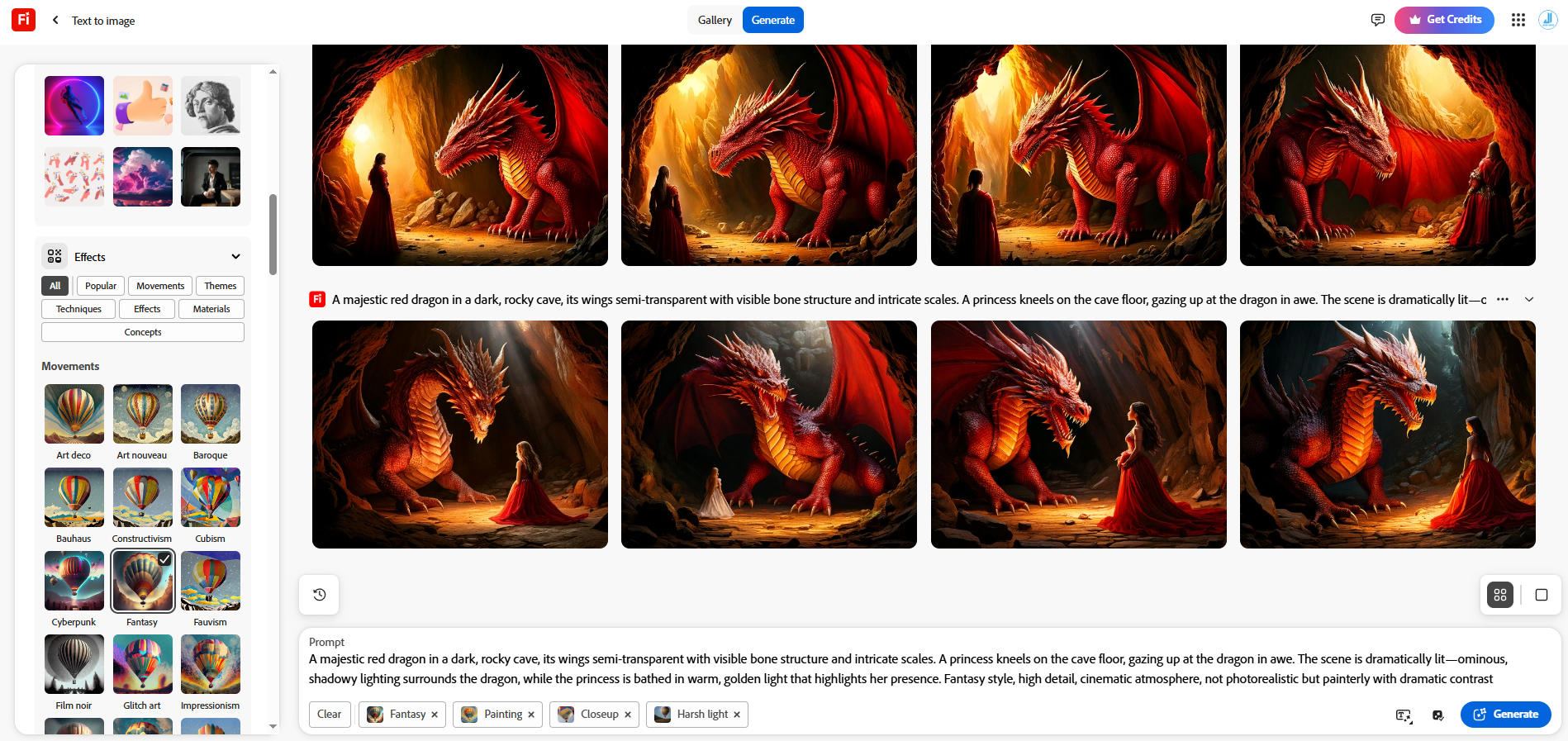Fantasy in Focus
This project explores how I integrated generative AI into my creative workflow to develop a set of fantasy-themed visual concepts for a playbill. By combining tools like Adobe Firefly, Firefly Boards, and Photoshop, I was able to quickly iterate on ideas, align with client references, and refine designs with both AI assistance and hands-on craftsmanship.
Starting With Prompting
To kick off the visual exploration, I collaborated with ChatGPT to craft a detailed prompt optimized for Adobe Firefly’s image generation capabilities. Once finalized, I adjusted various settings such as filters, style, and lighting to generate a series of rough mockups that aligned with the project’s creative direction. After evaluating several variations, I selected a version that captured the right tone and composition. To expand the visual options, I used Firefly’s “generate similar” feature to create additional iterations. I then curated the strongest images and compiled them into a moodboard to help establish a cohesive visual narrative.
Using AI to Ideate
Building on those visuals, I brought them into Adobe Firefly Boards (currently in Beta) to support early-stage concept development. Using Boards as a flexible moodboarding and ideation tool, I combined the AI-generated imagery with reference materials provided by the client. One of the platform’s key features the ability to blend multiple images using generative AI enabled me to experiment with new compositions and explore stylistic directions efficiently. This helped accelerate the development of low-fidelity mockups that merged client input with creative exploration, streamlining decision-making and ensuring alignment from the outset.
Final Touches
Following the ideation phase, I transitioned into Photoshop to begin refining the first mockup (shown on the left). While AI played a valuable role, manual adjustments were necessary to meet design standards and client expectations especially in areas where AI lacked nuance or stylistic accuracy. I used AI to extend the background to fit the required dimensions, while fine-tuning layout and composition myself. After presenting the initial concept, I developed a second version (on the right), with a stronger focus on the dragon’s wing. AI tools assisted in removing the background, but I used masking and image compositing to fully integrate new elements. For the title logo, I leveraged AI to convert the client’s handwritten sketch into a vector, then customized it further to maintain its original rough, hand-drawn look.




